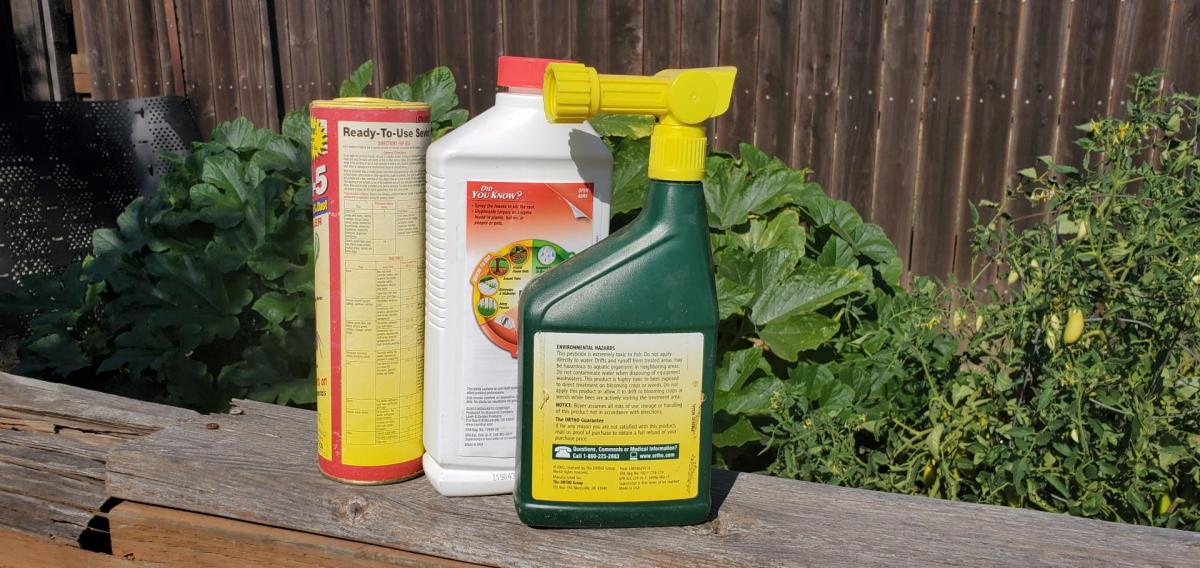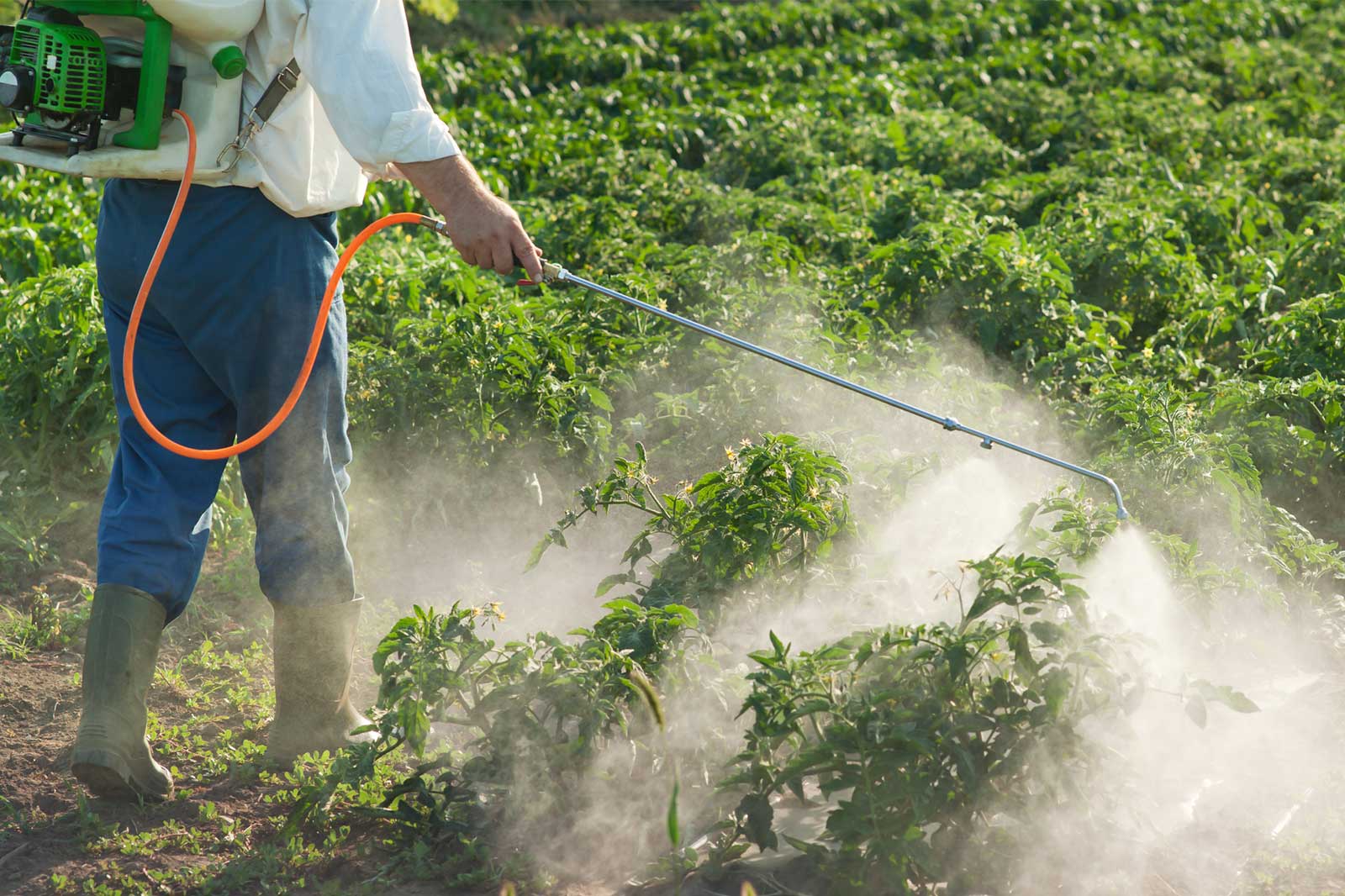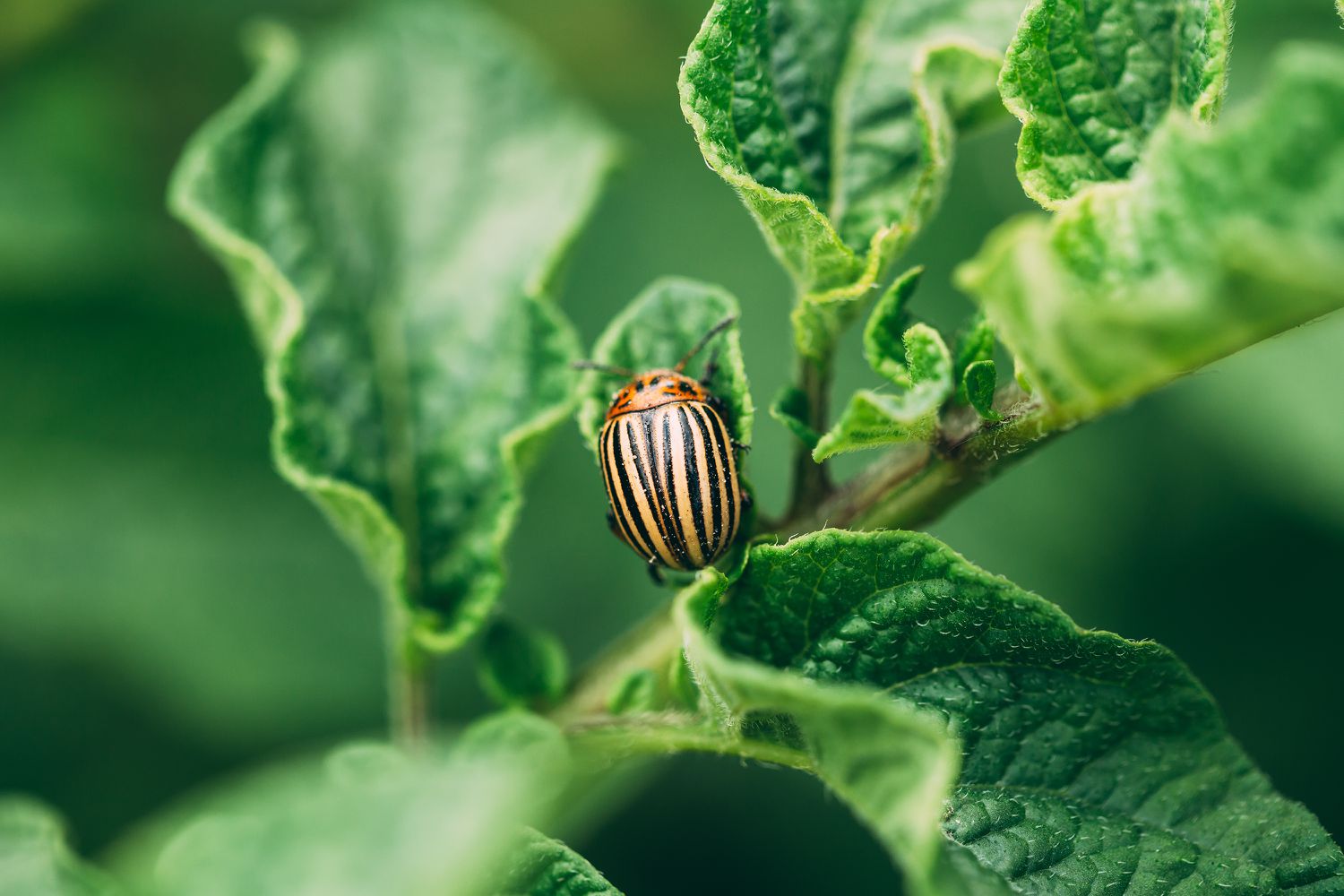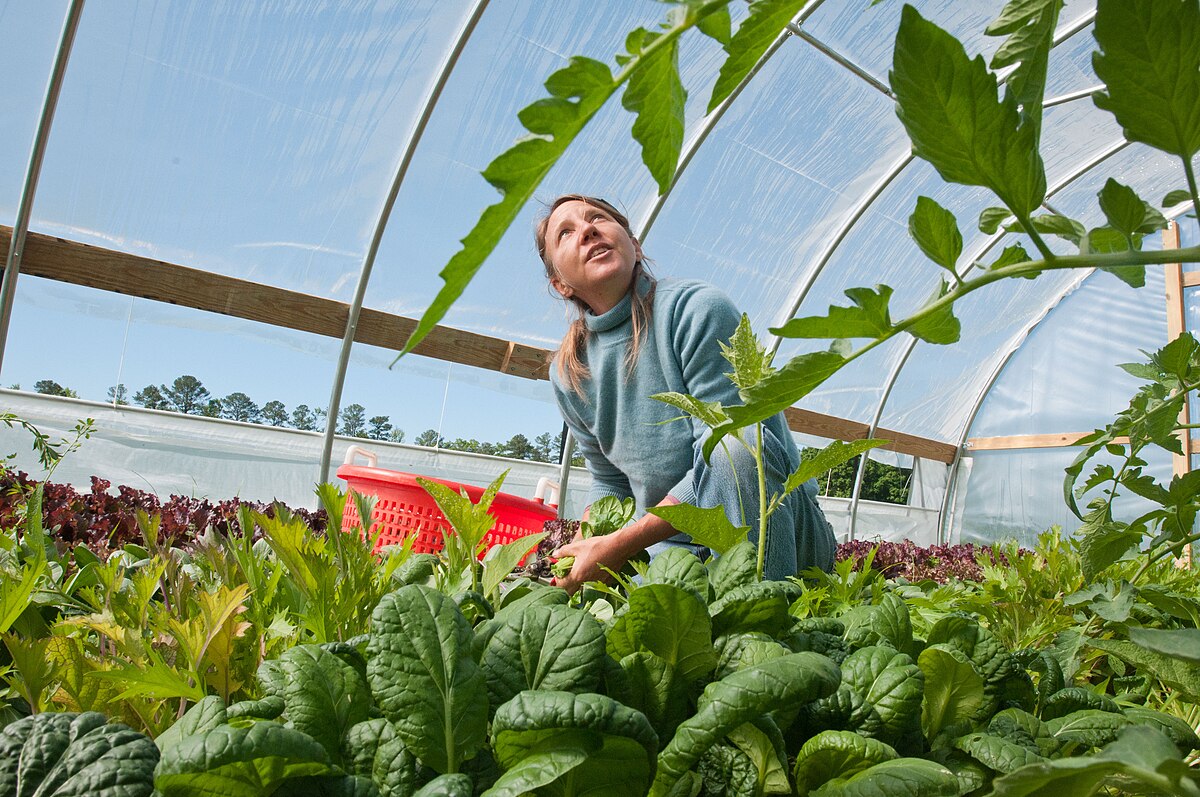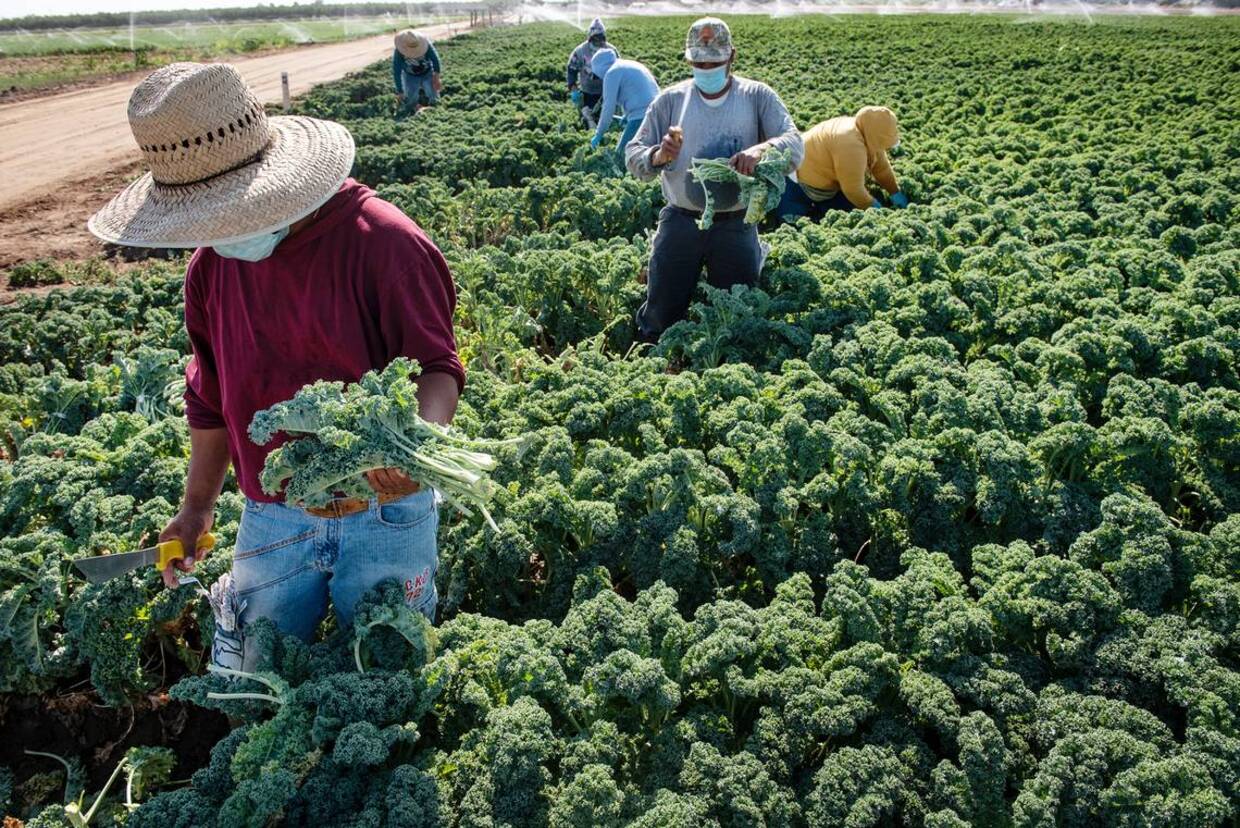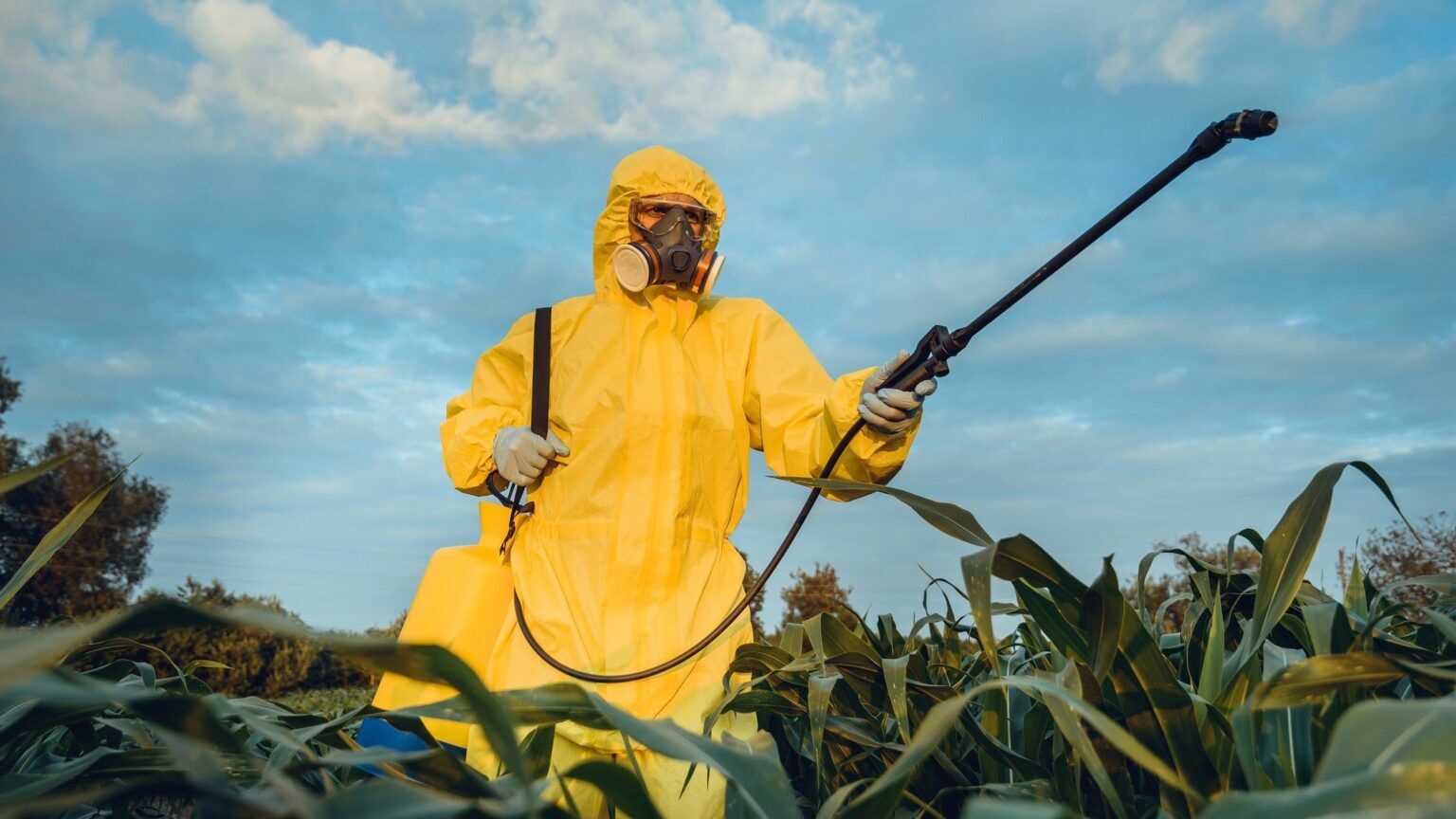Home>Gardening News and Trends>Latest News>What Is A Disadvantage Of Modern Synthetic Pesticides?


Latest News
What Is A Disadvantage Of Modern Synthetic Pesticides?
Modified: January 22, 2024
Find out the latest news on the disadvantages of modern synthetic pesticides and their impact on the environment. Stay informed with our informative articles and expert insights.
(Many of the links in this article redirect to a specific reviewed product. Your purchase of these products through affiliate links helps to generate commission for Chicagolandgardening.com, at no extra cost. Learn more)
Table of Contents
Introduction
The use of synthetic pesticides has been a prevalent practice in modern agriculture. These chemical substances are designed to control and eliminate pests that can damage crops and reduce yields. While they have undoubtedly played a significant role in increasing food production, there are several disadvantages associated with their use.
It is crucial to consider the negative impact of synthetic pesticides on both the environment and human health. Furthermore, the evolution of pesticide-resistant pests and the harm caused to beneficial organisms cannot be overlooked. Additionally, these pesticides can persist and accumulate in soil and water, leading to long-term consequences. Moreover, they can have detrimental effects on the quality of the food we consume.
This article aims to explore the various disadvantages of using modern synthetic pesticides, shedding light on the potential risks they pose to the well-being of our ecosystems and ourselves. By understanding these disadvantages, we can seek alternatives that minimize the negative impacts while still effectively managing pests and ensuring sustainable agriculture.
Environmental Impact
The use of modern synthetic pesticides has a significant impact on the environment. One of the main concerns is the contamination of soil and water. Pesticides can leach into the soil and infiltrate groundwater, posing a serious threat to aquatic and terrestrial ecosystems.
These chemicals can also have adverse effects on non-target organisms such as bees, birds, fish, and beneficial insects. Bees, for example, play a crucial role in pollination, supporting the reproduction of many plant species. Pesticides can interfere with their navigation and foraging abilities, leading to population decline and ecological imbalances.
Furthermore, pesticides can disrupt the natural balance of ecosystems by targeting specific pests. This can lead to secondary pest outbreaks, as natural predators and parasites are eliminated. As a result, farmers may rely even more heavily on pesticides, creating a vicious cycle of chemical dependency.
Another concern is the impact of pesticide use on biodiversity. The loss of habitat due to intensification of agriculture and the exposure of non-target organisms to pesticides can contribute to the decline of certain species. This loss of biodiversity can have far-reaching consequences for the stability and resilience of ecosystems.
Overall, the environmental impact of synthetic pesticides highlights the urgent need to adopt more sustainable and ecologically friendly pest management practices. By reducing pesticide use and promoting integrated pest management (IPM) approaches, we can mitigate these negative effects and promote the conservation of our natural resources.
Health Risks
The use of modern synthetic pesticides raises concerns about potential health risks for humans. Exposure to these chemical substances can occur through various pathways, including direct contact, inhalation, and consumption of contaminated food and water.
Research has linked pesticide exposure to a range of health issues, including acute and chronic illnesses. Acute effects can manifest as skin irritations, respiratory problems, nausea, and dizziness. Prolonged exposure, especially at high doses, can lead to more severe health problems such as neurological disorders, reproductive issues, and certain types of cancer.
Children are particularly vulnerable to the health risks posed by pesticides. Their developing bodies and organ systems are more susceptible to the toxic effects of these chemicals. Studies have indicated that early-life exposure to pesticides may have long-term impacts on cognitive development, behavioral disorders, and increased risk of certain diseases.
Furthermore, pesticide residues on food can pose a risk to consumers. Even low levels of pesticide residues, when consumed over time, can accumulate and have a cumulative effect on human health. This is particularly concerning as pesticides are used extensively in conventional farming, and residues can be found on fruits, vegetables, and other food products.
It is important for consumers to be aware of and make informed choices regarding the food they consume. Opting for organic produce, which avoids the use of synthetic pesticides, can minimize exposure to these chemicals and reduce potential health risks.
Protecting human health requires a comprehensive approach that includes stricter regulation, proper training and education for farmers and workers handling pesticides, and the promotion of sustainable farming practices. By reducing reliance on synthetic pesticides and embracing safer alternatives, we can safeguard the health and well-being of both agricultural workers and consumers.
Resistance and Evolution of Pests
One of the significant disadvantages of modern synthetic pesticides is the development of pesticide resistance in pests. Pesticides act as selective pressure on target pests, favoring individuals with genetic traits that enable them to survive exposure. Over time, these resistant pests can dominate the population, rendering the pesticides ineffective.
This phenomenon is a result of the rapid evolutionary response of pests to the constant exposure to pesticides. The repeated use of the same chemical or mode of action creates a strong selection pressure, driving the evolution of resistance mechanisms such as mutations or changes in detoxification enzymes.
Pesticide resistance poses a significant challenge for farmers and pest management strategies. They must continually search for new products or develop alternative methods to combat resistant pests. This not only increases the cost of pest control but also poses environmental risks as new pesticides are introduced to replace ineffective ones.
Moreover, the evolution of pesticide-resistant pests can result in the development of cross-resistance, where pests become resistant to multiple pesticides within the same chemical class. This further limits the effectiveness of available pest control options and reduces the effectiveness of integrated pest management (IPM) programs.
Addressing the issue of pesticide resistance requires a multifaceted approach. This includes implementing crop rotation, using a variety of pest control methods, such as biological control and cultural practices, and reducing the reliance on a single pesticide or mode of action. Integrated pest management strategies that combine different pest control techniques can help reduce the selection pressure on pests, decreasing the likelihood of resistance development.
By adopting more sustainable and diverse pest control strategies, farmers can slow down the evolution of pesticide resistance and maintain effective pest management over the long term.
Harm to Beneficial Organisms
The use of modern synthetic pesticides not only harms target pests but also has a detrimental impact on beneficial organisms in the environment. Beneficial organisms play important roles in pest suppression, pollination, and maintaining ecological balance.
Pesticides can directly and indirectly harm beneficial organisms such as bees, birds, bats, spiders, and predatory insects. Bees, for instance, are essential pollinators responsible for the reproduction of numerous plant species. Pesticides can impair their reproductive abilities, navigation skills, and overall health, leading to a decline in bee populations.
Predatory insects, such as ladybugs and lacewings, are natural enemies of pests and help regulate their populations by feeding on them. However, when exposed to pesticides, these beneficial insects can be killed or have their numbers reduced. This disruption of the natural predator-prey balance can result in increased pest outbreaks and the need for more pesticide applications.
Beyond insects, pesticides can have adverse effects on other beneficial organisms. For example, birds consuming pesticide-contaminated insects may suffer from reduced reproductive success or even death. Similarly, bats, which control nocturnal pests, are vulnerable to pesticide poisoning, negatively impacting their populations.
The harm caused to beneficial organisms can have cascading effects on ecosystems, leading to imbalances and reduced biodiversity. This not only affects the functioning of ecosystems but also impacts the sustainability and resilience of agricultural systems.
To mitigate the harm to beneficial organisms, it is essential to adopt integrated pest management (IPM) practices that prioritize the preservation and enhancement of natural enemies of pests. This includes using selective and targeted pesticide applications, implementing conservation measures to support beneficial organisms, and promoting habitat diversity on farms.
By safeguarding the populations of beneficial organisms, farmers can harness their natural pest control services, reduce the dependence on synthetic pesticides, and create a more sustainable and balanced agricultural ecosystem.
Persistence and Accumulation in Soil and Water
One of the significant drawbacks of modern synthetic pesticides is their persistence and accumulation in soil and water. Pesticides applied to agricultural fields can persist in the soil for extended periods, potentially causing long-term environmental and ecological consequences.
These chemicals can be resistant to degradation, leading to their accumulation in soil over time. This accumulation can have adverse effects on soil health and microbial activity, disrupting the natural processes that support plant growth and nutrient cycling.
Moreover, pesticides can leach from the soil into groundwater, contaminating drinking water sources and aquatic ecosystems. This contamination poses risks not only to human health but also to aquatic organisms and the overall integrity of freshwater environments.
Surface runoff of pesticides during rainfall events can also result in the transportation of these chemicals into nearby water bodies, further contributing to water pollution. This can have detrimental effects on aquatic life, including fish, amphibians, and invertebrates.
The persistence and accumulation of pesticides in the environment emphasize the need for more sustainable pest management approaches. Integrated pest management (IPM) practices that prioritize the use of non-chemical control methods and targeted pesticide applications can help minimize the persistence and accumulation of these chemicals in soil and water.
Additionally, adopting practices such as soil conservation, crop rotation, and the use of cover crops can reduce the reliance on pesticides and promote the health and fertility of agricultural soils. Proper pesticide storage, handling, and disposal are also crucial to prevent contamination of the environment and minimize the risks associated with their persistence.
By minimizing pesticide residues in soil and water, we can protect the integrity of ecosystems, maintain water quality, and establish a more sustainable and environmentally friendly approach to pest management.
Negative Effects on Food Quality
The use of modern synthetic pesticides can have negative effects on the quality of the food we consume. Pesticide residues can remain on agricultural products even after they have been harvested, processed, and made available for consumption.
While regulatory limits are in place to ensure that pesticide residues in food are within safe levels, concerns remain about the cumulative effect of long-term exposure to multiple residues. Some studies suggest that chronic low-level exposure to pesticide residues may increase the risk of certain health problems, including cancer, reproductive issues, and neurological disorders.
Furthermore, certain pesticides can impact the nutritional content of crops. For example, studies have shown that the use of certain pesticides can lead to a reduction in the levels of antioxidants and other beneficial compounds in fruits and vegetables. This can affect the nutritional value and potential health benefits associated with consuming these foods.
In addition to direct effects on human health, there can be indirect effects on food quality. Pesticides designed to target pests can unintentionally harm non-target organisms, such as pollinators and natural enemies of pests. This disruption to the ecosystem can impact crop yield and quality.
Consumers increasingly prioritize food that is free from synthetic pesticides and seek out organic produce as an alternative. Organic farming practices prohibit the use of synthetic pesticides and focus on sustainable pest management methods. By choosing organic options, consumers can reduce their exposure to pesticide residues and support the production of high-quality, environmentally friendly food.
Efforts to improve food quality must focus on promoting sustainable farming practices, reducing pesticide use, and ensuring the safety and nutrition of our food. By adopting integrated pest management (IPM) strategies that minimize pesticide reliance, farmers can create healthier and safer food options for consumers while promoting environmental sustainability.
Alternatives to Synthetic Pesticides
To address the disadvantages and risks associated with synthetic pesticides, it is essential to explore and adopt alternatives that promote sustainable pest management. Several effective alternatives are available, which can minimize the dependence on synthetic pesticides while still effectively managing pests.
Integrated Pest Management (IPM) is a comprehensive approach that combines various pest control tactics to keep pest populations at acceptable levels. This includes cultural practices such as crop rotation, selecting pest-resistant plant varieties, and enhancing soil health to promote natural resistance to pests.
Biological control is another important component of IPM, involving the use of natural enemies to suppress pest populations. Predatory insects, parasitoids, and microbial agents can help control pests without the need for chemical interventions. Encouraging and conserving beneficial organisms through habitat diversification and elimination of pesticide use can enhance the effectiveness of biological control.
Crop diversification and intercropping can also help manage pests by disrupting their lifecycles and reducing pest pressure. By planting a mixture of different crops, pests are less likely to establish and spread, reducing the need for chemical pesticides.
Cultural practices, such as maintaining proper sanitation and hygiene in agricultural settings, can also play a crucial role in pest management. Removing crop residues, treating irrigation water, and implementing good field management practices can keep pest populations in check.
Plant-based and botanical pesticides derived from natural sources, such as plant extracts and essential oils, can be effective against certain pests. These biopesticides offer a potential alternative to synthetic chemical pesticides and pose fewer risks to human health and the environment.
Lastly, genetic engineering and the use of genetically modified (GM) crops can provide pest resistance traits in plants. GM crops have been developed with built-in resistance to specific pests, reducing the need for external chemical pesticide applications.
By adopting these alternative approaches, farmers can reduce reliance on synthetic pesticides, minimize the environmental impacts, and promote sustainable agricultural practices. Integrated pest management strategies, biological control, cultural practices, and the use of natural and genetic-based pest control methods contribute to a more balanced and ecologically sound approach to pest management.
Conclusion
The use of modern synthetic pesticides in agriculture has undeniably provided short-term benefits in terms of pest control and increased food production. However, the disadvantages associated with their use cannot be ignored. The environmental impact, health risks, resistance and evolution of pests, harm to beneficial organisms, persistence and accumulation in soil and water, and negative effects on food quality all highlight the need for a more sustainable approach to pest management.
By adopting alternative pest control methods such as integrated pest management (IPM), biological control, and cultural practices, we can reduce reliance on synthetic pesticides. These methods prioritize the preservation and enhancement of natural enemies of pests, promote biodiversity, and minimize the risks of pesticide resistance and environmental contamination.
In addition to alternative strategies, consumers can also play a crucial role in promoting sustainable pest management. By choosing organic produce and supporting farmers who prioritize sustainable farming practices, consumers can reduce their exposure to pesticide residues and support the production of high-quality, environmentally friendly food.
The drawbacks of synthetic pesticides demonstrate the need for comprehensive changes in our agricultural systems. Stricter regulations, proper training and education for farmers, and the promotion of sustainable farming practices can contribute to reducing reliance on synthetic pesticides and prioritizing the health of ecosystems and human well-being.
It is crucial for farmers, policymakers, and consumers to recognize the importance of sustainable pest management and work collectively to integrate effective alternatives into agricultural practices. By doing so, we can move towards a more balanced and ecologically sound approach to pest management, ensuring a sustainable future for our food supply, the environment, and human health.
